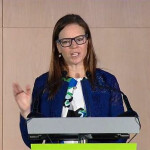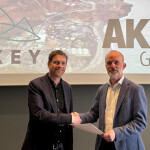The future of seafood is aquaculture and the future of aquaculture is offshore, delegates were told at last week’s Offshore Mariculture 2010 conference in Dubrovnik, Croatia.
This biennial event, which pulls together producers, suppliers, scientists and many other stakeholders, has, since its inception, been an arena of fierce debate. In Dubrovnik, it quickly became apparent that the fish farming industry had evolved dramatically since the conference’s last gathering in Alicante, Spain, in 2008. Space rather than feed availability and conversions or NGO interference has seemingly become the biggest hindrance to the growth of aquaculture.
Arne Fredheim, director of the Center for Research-based Innovation in Aquaculture Technology and Research (Create), highlighted the amount of fish used in fishmeal for farmed species such as Atlantic salmon, sea bass and sea bream is falling, a fact that has gone some way to appeasing critical environmental bodies.
But there is a shortage of land available to freshwater farming, he acknowledged.
A similar problem exists with “best use of space” in inshore areas, with tourism, energy companies, seafood producers and other industries all vying for the same waters. In Norway, for example, because of the country’s long geographical landscape and relatively small population, one would think it wouldn’t be a problem getting permission to set up new near-shore farm sites. But it’s very hard to accomplish, confirmed Fredheim.
“It’s a growing war. Farmers don’t just want space, they want the best space,” said Fredheim, adding that same applies to all other interested parties and stakeholders throughout the world. “The future for this type of production therefore has to be offshore marine aquaculture.”
Croatia was a particularly fitting choice of venue for this conference. The Mediterranean country, with its fjord-like coastline, is internationally renowned for its successful spatial planning policy. But the relationship between the aquaculture and tourism industries has become increasingly frayed in recent years.
As a result of the rapid growth of tourism, many Croatian producers have run out of available space close to their coastline and are finding themselves forced to look further offshore. There are a lot of positive aspects to commercial offshore activities, including possible increased productivity and high levels of quality, less environmental impacts and less chance of disease outbreaks.
Slowly but surely, there’s industry movement and successful offshore farms are breaking through. Notable operations now exist in Hawaii, the Bahamas and Turkey.
But what of the costs associated with locating deeper at sea? There’s no escaping that offshore production remains more expensive than inshore farming, even without factoring in the latest state-of-the-art cage models.
Fredheim suggested offshore aquaculture is not just about new technology. It has to be user-friendly and cost-effective or no commercial fish farmer will buy into it, he said. There has perhaps been too much focus on “creating an offshore revolution” by looking at new species, new equipment and new farming programs, he added.
“That is too much of a risk,” said Fredheim. “Instead the industry should be looking to evolve step by step. And a lot of existing technology is suitable for offshore.”
Looking further ahead, and factoring in both the planet’s growing population and the rising demand for seafood, can producers afford not to be looking to the horizon? Certainly the consensus at this conference was that they couldn’t.
All Commentaries >





